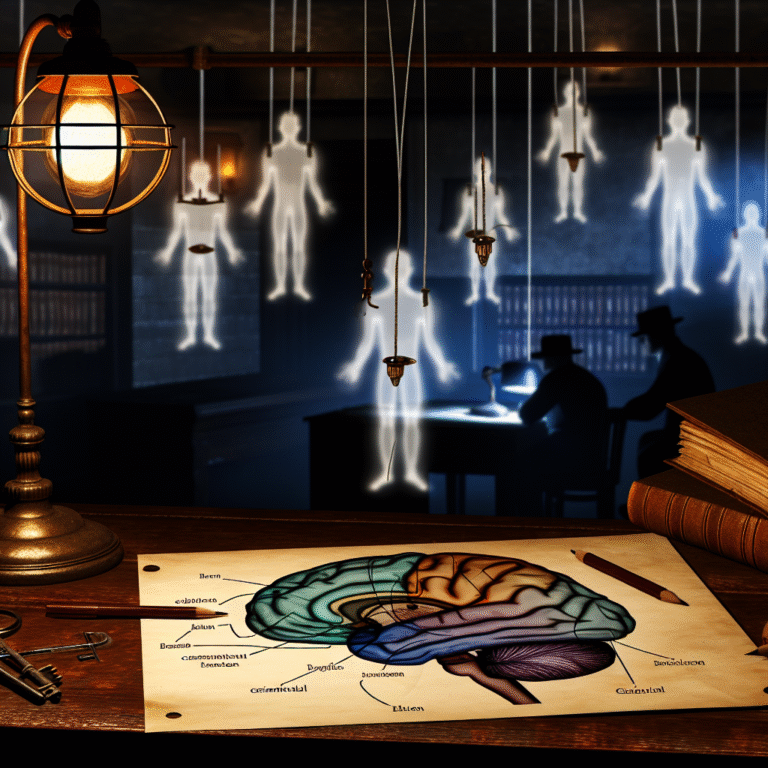
Introduction
The cycle of crime often feels like an unending spiral, trapping individuals and communities in a web of negative behaviors, consequences, and recidivism. Breaking this cycle isn’t merely a goal—it’s a profound necessity for fostering healthier societies and personal transformations. With a focus on Breaking the Cycle: Understanding the Path to Crime Desistance, we will explore the intricate factors that contribute to criminal behavior and highlight the strategies that can lead to long-term change. This journey of understanding doesn’t just shed light on the complexities of crime; it empowers both individuals and communities to reclaim their narratives.
The Importance of Understanding Crime Desistance
Crime desistance is more than just stopping criminal activities; it embodies the process of reintegrating into society and living a life that rejects the pathways that lead to crime. Delving into the nuances of Breaking the Cycle: Understanding the Path to Crime Desistance can benefit not only those directly affected but also the communities surrounding them.
The Ripple Effect of Crime on Communities
Understanding crime’s impact on community cohesion is essential. Crime breeds fear, reduces property values, and can lead to a cycle of disinvestment. By focusing on desistance, communities can experience revitalization and renewal, leading to more inclusive and healthier environments.
Engaging with the Personal Aspect of Crime
Each crime has a backstory, often riddled with personal struggles, societal pressures, and systemic barriers. Acknowledging the human element in criminal behavior is crucial for understanding how desistance can take root.
The Defining Factors of Recidivism
To dissect the path to crime desistance, we must first understand the factors that encourage recidivism or repeat offenses.
Socioeconomic Influences
Economic stress can trap individuals in a cycle of crime. According to a 2020 study published in the Journal of Criminal Justice, individuals with unstable employment are 60% more likely to re-offend. By addressing these socioeconomic barriers, we pave the way for breaking the cycle.
Mental Health Issues
Mental health plays a significant role in criminal behavior. Many individuals involved in the criminal justice system struggle with unresolved trauma, addiction, and mental health disorders. Providing access to mental health resources can facilitate the transition toward desistance.
The Impact of Social Networks
An individual’s environment significantly influences their behavior. If surrounded by negative influences, the likelihood of returning to crime increases. Building supportive networks can be pivotal in Breaking the Cycle: Understanding the Path to Crime Desistance.
Case Studies: Real-World Applications of Desistance Principles
Case Study 1: The Role of Education—The Story of Alex
Alex was sentenced to five years for drug-related offenses. While incarcerated, he enrolled in educational programs that offered vocational training. Upon release, Alex secured a stable job and distanced himself from former associates. This transformation highlighted the importance of access to education in breaking the cycle of crime.
Analysis: Alex’s story demonstrates how educational programs can serve as effective tools for desistance, providing individuals with the skills necessary to secure employment and fostering a sense of purpose.
Case Study 2: Peer Support Groups—The Journey of Maria
Maria, a former gang member, faced numerous attempts at desistance, each thwarted by her social environment. It wasn’t until she joined a peer support group aimed at empowering women that she found a community of encouragement. Maria has since become an advocate for helping others escape similar circumstances.
Analysis: Maria’s experience emphasizes the transformative power of supportive networks while illustrating the role community plays in sustaining desistance efforts.
Case Study 3: Mental Health and Rehabilitation—The Transformation of James
James struggled with untreated PTSD, which led to repeated offenses. Upon entering a rehabilitation program that prioritized mental health, he began to confront his trauma. With therapy and community support, James has maintained a crime-free lifestyle for over three years.
Analysis: This case underscores the necessity of integrated mental health treatment in programs aimed at facilitating crime desistance.
| Factor | Description | Impact on Desistance |
|---|---|---|
| Education | Access to vocational training | Increases employability and self-worth |
| Social networks | Support systems that encourage change | Reduces isolation and negative influences |
| Mental health support | Access to counseling and therapy | Addresses underlying issues linked to crime |
| Employment opportunities | Stable job placements | Reduces economic pressure and increases stability |
Strategies for Breaking the Cycle
To effectively cultivate pathways to crime desistance, certain strategies can make a considerable difference.
Education and Skill Building
Educational initiatives, whether in correctional facilities or community centers, empower individuals with valuable skills. Programs that connect education with real-world job opportunities are particularly effective.
Comprehensive Mental Health Support
Integrating mental health services into rehabilitation processes can significantly improve outcomes. Developing holistic approaches that tackle trauma, addiction, and interpersonal skills ensures a supportive environment for desistance.
Strengthening Community Involvement
Active community engagement creates a sense of belonging. Initiatives that foster relationships between former offenders and successful community members can offer invaluable mentorship and guidance.
Policy Changes and Advocacy
Advocating for policy changes that support rehabilitation—rather than punishment—can reshape the criminal justice landscape. Legislation that focuses on restorative justice principles can serve as a foundation for long-term desistance efforts.
Conclusion
Breaking the Cycle: Understanding the Path to Crime Desistance is not merely a theoretical exploration; it is a call to action. Throughout this article, we’ve highlighted the multifaceted nature of crime and the vital elements that contribute to change. By addressing socioeconomic factors, mental health, community networks, and education, we can foster an environment conducive to healing and transformation.
A collective effort is needed to support those desiring change. Together, we can ensure that the path to desistance is not only understood but actively pursued, empowering individuals to break free from the cycles of crime and reclaim their lives.
FAQs
1. What is crime desistance?
Crime desistance refers to the process through which individuals stop engaging in criminal activities and reintegrate into society.
2. How can education help in crime desistance?
Education provides individuals with skills and opportunities, ultimately reducing the likelihood of recidivism by improving their employment prospects and self-worth.
3. Why is mental health support essential in this process?
Many individuals involved in crime struggle with untreated mental health issues. Addressing these through professional support can help heal underlying trauma that contributes to criminal behavior.
4. How do peer support groups facilitate desistance?
Peer support groups create a sense of belonging and accountability, helping individuals navigate the challenges of reintegration and providing encouragement.
5. What role does community involvement play in crime desistance?
Community involvement fosters social connections and opportunities for mentorship, reducing isolation and encouraging positive behavior changes among individuals seeking desistance.
By understanding the factors at play in Breaking the Cycle: Understanding the Path to Crime Desistance, we can forge a brighter, crime-free future for individuals and communities alike.















